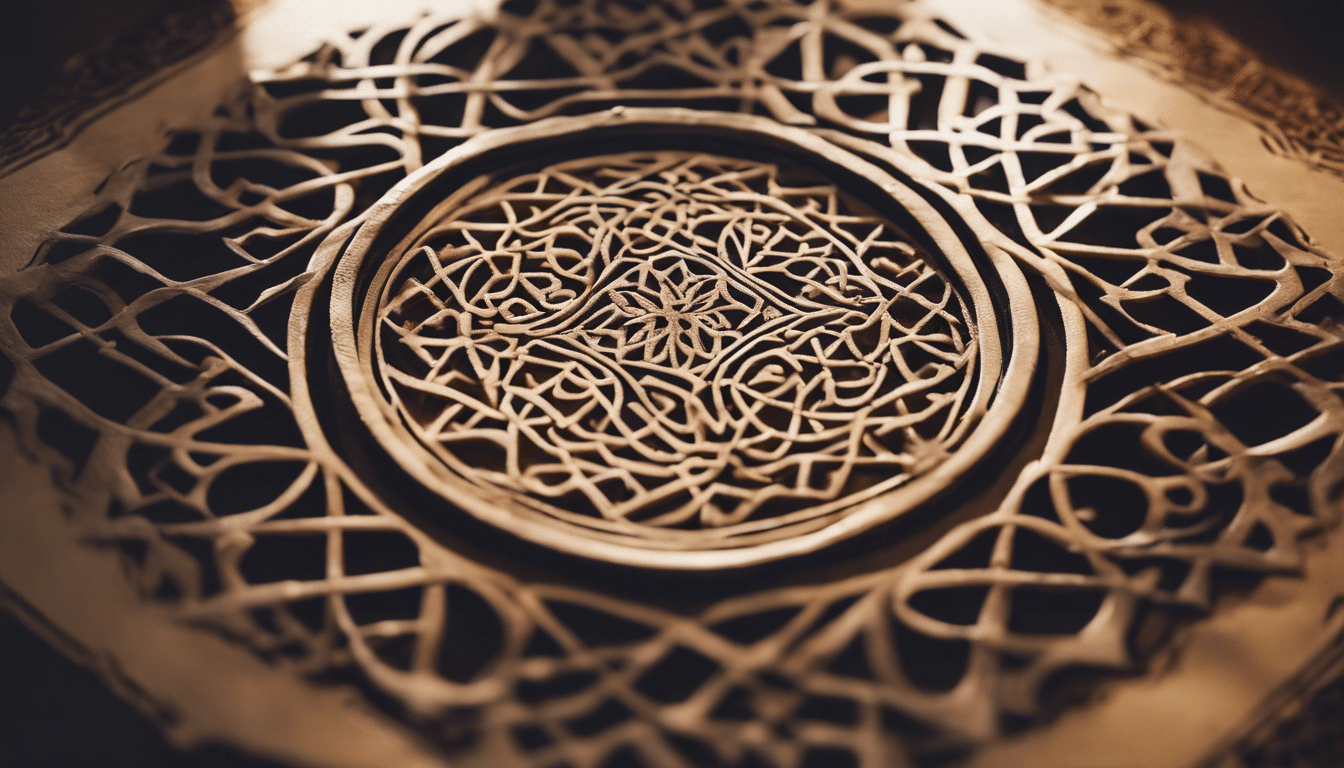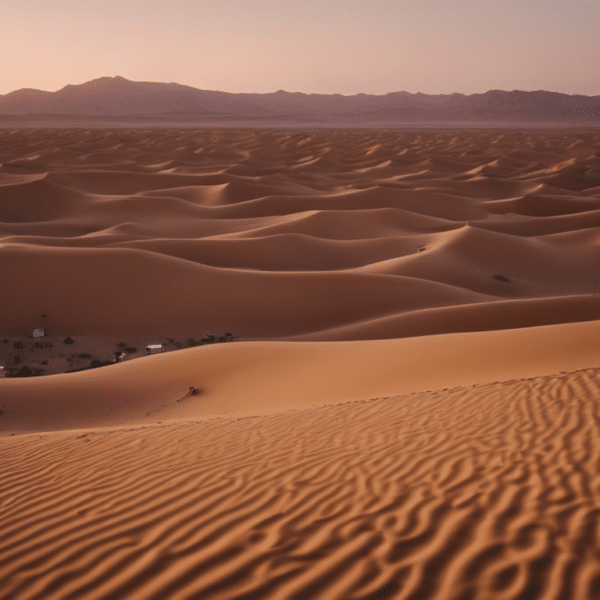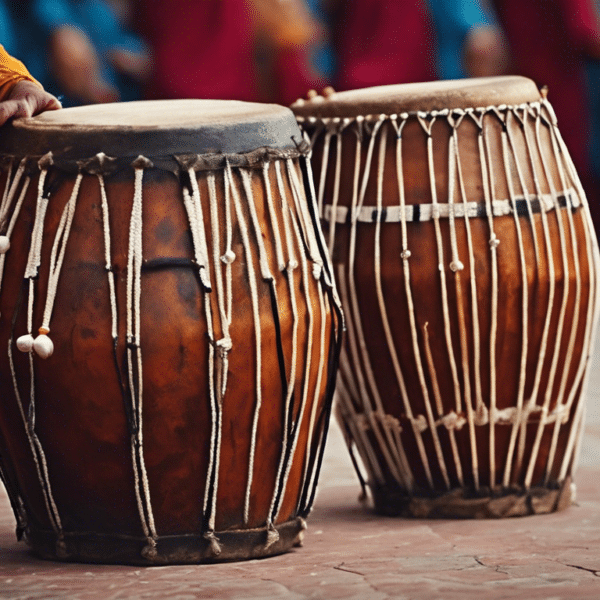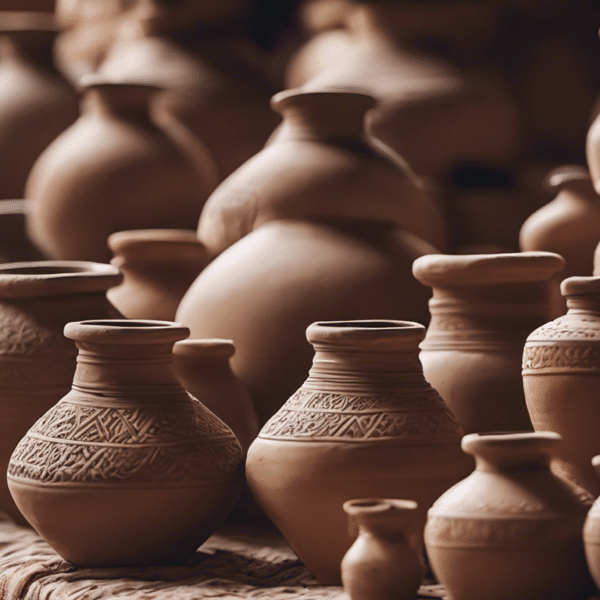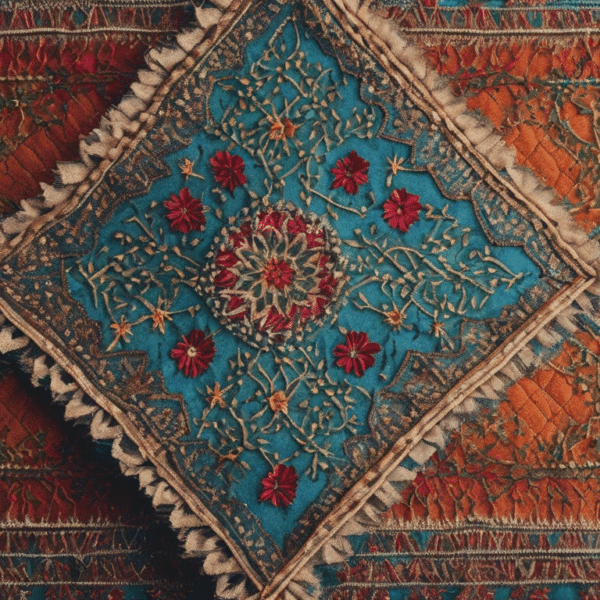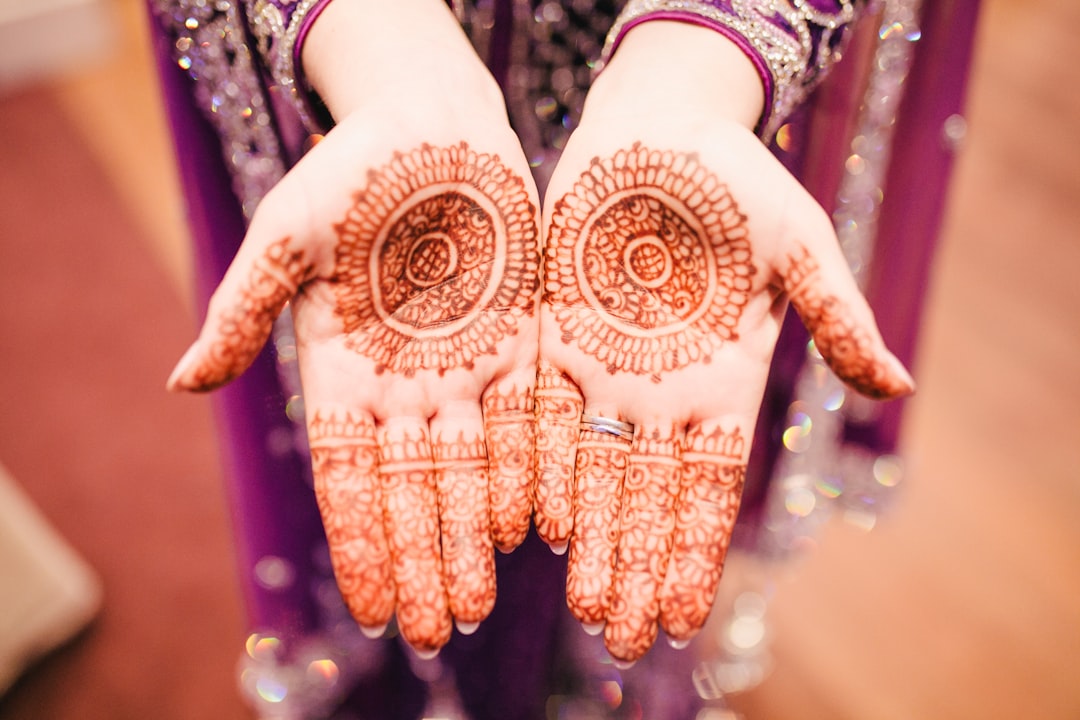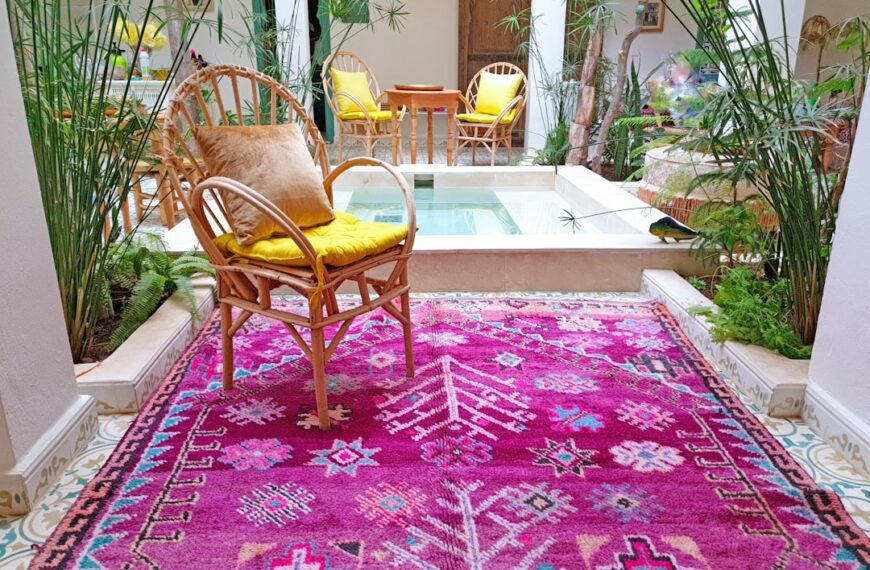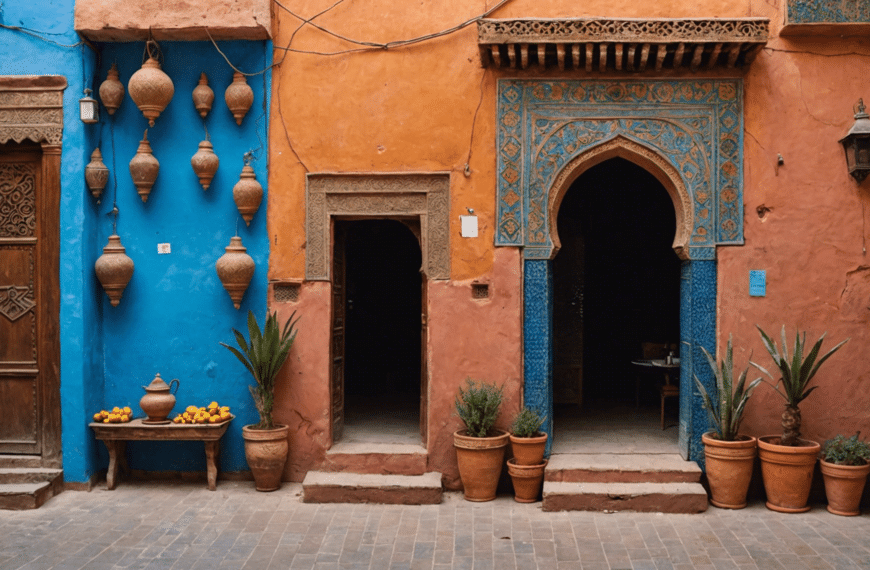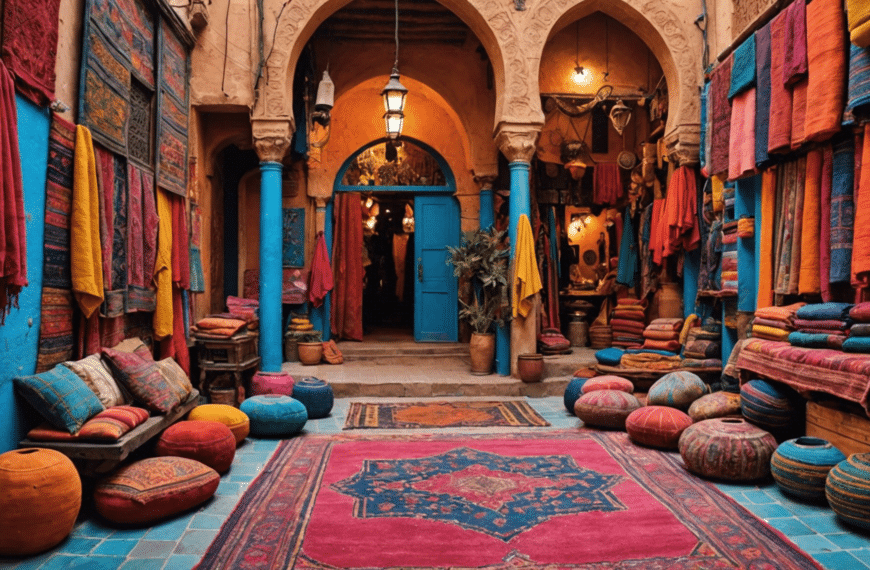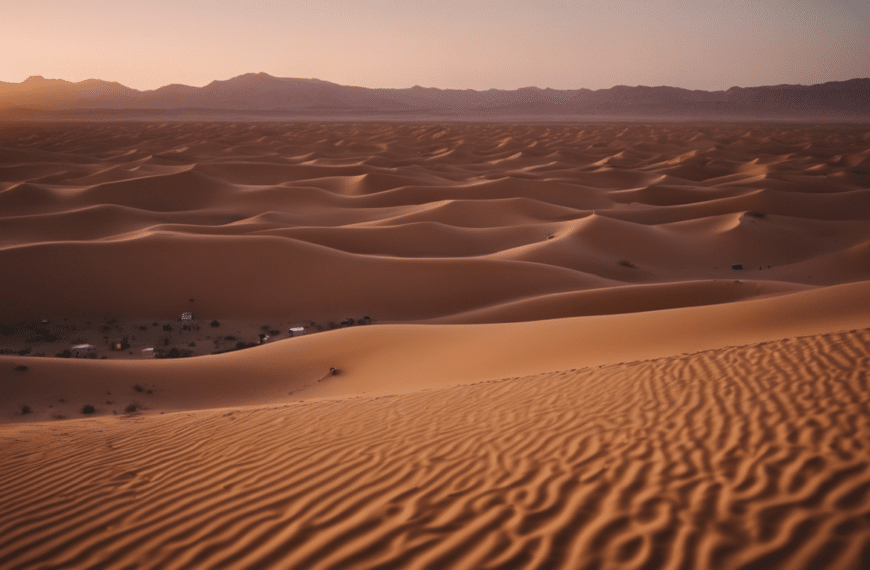The Historical Evolution of Moroccan Calligraphy
Moroccan Calligraphy: An Art Steeped in History and Traditions
The art of Moroccan calligraphy, a visual symphony crafted with delicate strokes and intricate swirls, embodies a rich tapestry that narrates a tale of cultural intermingling and evolution. A hypnotic dance of pen on paper, it speaks of Morocco’s ancestral prestige and its historical sieve that caught and melded myriad artistic threads from across the Muslim world.
The Roots of Moroccan Script: From Kufic to Contemporary Forms
In the nascent days of Moroccan lettering, the austere angularity of the Kufic script, borne on the wind from the East, found its way to the Moroccan quill. Over the centuries, interaction with Andalusian and Sub-Saharan influences impregnated the local script with an array of stylistic variations. Maghribi script, characterized by its round, looping letters and pronounced dot placement emerged during the 10th century, capturing the essence of Morocco’s distinct identity within the Islamic world. Enshrined in the region’s manuscripts, architectural facades, and currency, this script is a historical hallmark of Moroccan national scriptural identity.
The Golden Age: Flourishing of Calligraphy and Culture
The Marinid dynasty (13th-15th century) heralded a golden age for Moroccan calligraphy, where script became the silent orator of the divine, immortalizing the Quranic text in grand mosques and madrasas. This period, fostered by enlightened patronage and the cross-pollination among calligraphic schools, saw the zenith of calligraphic expression with the refinement of Maghribi and the birth of its divergent, the Andalusian script. Moroccan scribes, now masters of their craft, started to pave their own artistic avenues, transitioning from pure scripture to decorative art, an alloy of geometric patterns and florid designs that resonate to this day.
Spiritualism in Script: Sufism and Calligraphic Expression
The embrace of Sufism in Morocco’s spiritual and social fabric rendered the written word even more profound. Calligraphy, for the Sufi, served as a meditative practice, a symbolic conduit to the divine. The act of penning down the verses encapsulated more than aesthetic pursuit—it was a ritual replete with devotion, capturing the essence of the Sufi’s quest for union with the Almighty. Coupling calligraphy with Sufi philosophy, works of art were not merely seen; they were experienced, an invocation of deeper thought and spiritual elevation.
The Modern Metamorphosis: Preserving Tradition in a Changing World
As the waves of modernity lap upon Morocco’s shores, the enduring legacy of calligraphy faces new tides. Contemporary Moroccan script artists, like the revered Hassan Massoudy, keep the spirit of calligraphy vibrant, marrying traditional techniques with modern aesthetics. Calligraphers delve into new mediums, exploring the frontiers beyond paper—digital canvases and multimedia installations exhibit rich pasts in present forms. These innovators serve as custodians of the script, ensuring the ancestral echoes within the curvatures and lines of Moroccan calligraphy resonate amidst the contemporary cacophony.
The lifeblood of Morocco’s calligraphic tradition pulsates through generations of artists who pay homage to a bygone era yet invigorate the craft with breaths of fresh air. For the discerning eye, each loop, each dot transcends mere ornamentation, encapsulating a universe where tradition and progress embrace, where every stroke honors history while painting a hopeful trajectory towards the future.
Distinctive Styles and Techniques in Moroccan Calligraphic Art
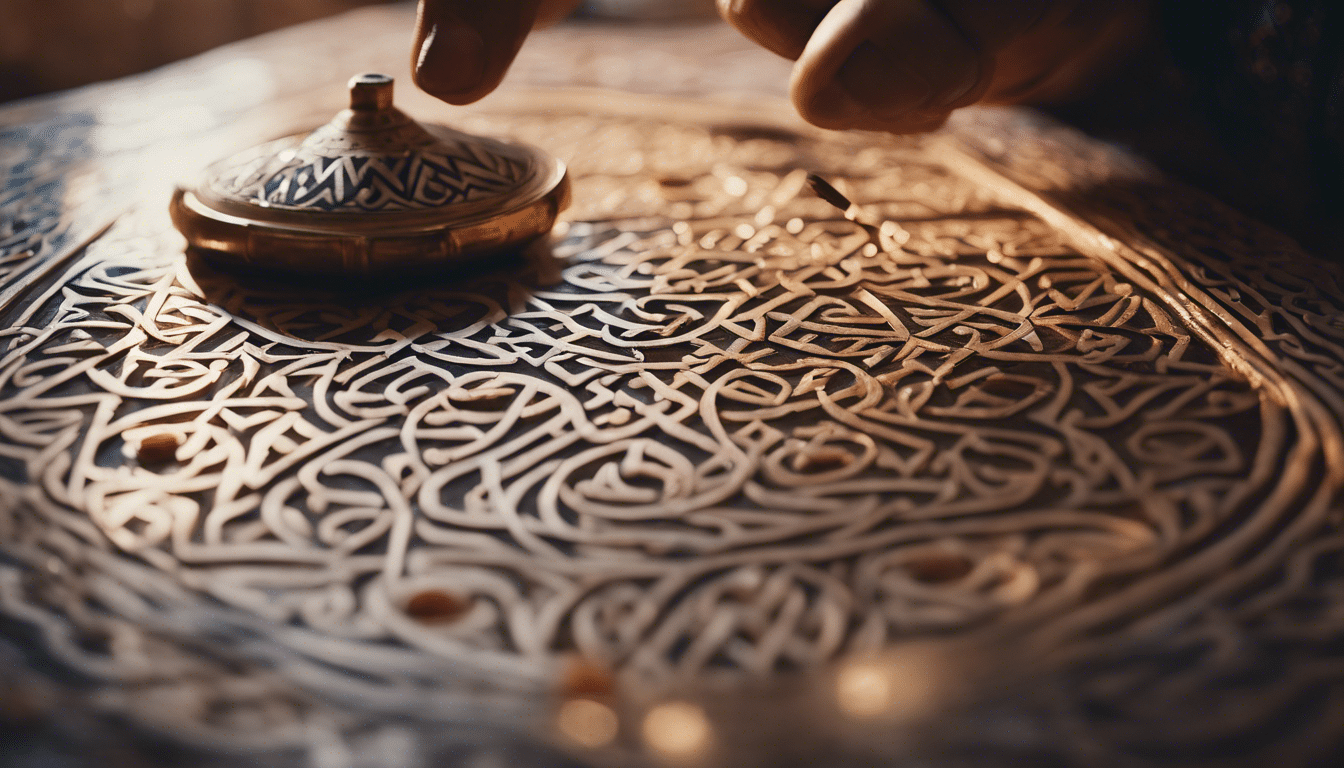
The Essence of Moroccan Calligraphy
The artful scripts of Moroccan calligraphy carry within them a saga of cultural expression. Gazing upon this delicate craft, one beholds not merely letters but a legacy encased in swirling designs and potent symbols. Moroccan calligraphy, or al-khatt al-maghribi, is more than a form of writing—it’s a visual symphony that resonates with the country’s Islamic roots and the broader Arab world while embracing a distinctive Moroccan soul.
Unveiling Maghribi Script: A Moroccan Signature
Chief among Moroccan calligraphy’s treasure trove of styles is Maghribi script. Originating in the western Islamic regions, it is identified by its rounded characters and ornate crowns. Unlike the more angular Kufic or the fluid Diwani, Maghribi creates its own statement of grace—a dance of curves and lines that often graces the yellowed pages of ancient Qur’ans and legal texts. Its distinctiveness lies not just in its aesthetics but its embodiment of Moroccan tradition and spiritual life.
Techniques That Transcend Time
The crafting of Moroccan calligraphy is steeped in traditional techniques that require the utmost precision and patience. The journey begins with the tools: a deftly cut qalam, or reed pen, and a meticulously prepared ink derived from natural substances. Achieving the hallmark fluidity of calligraphic forms involves a masterful blend of pressure and movement, nurtured through years of diligent practice.
- Dipping and Writing: Calligraphers dip their qalams at a precise angle to ensure the right flow and thickness of the ink, capturing the intrinsic character of each stroke.
- Guidelines and Proportions: Hidden lines guide the creation of letters, maintaining the harmony and proportion that are vital to calligraphic beauty.
- Composition: Beyond individual letters, the arrangement of words and phrases is artfully considered, giving life to compositions that echo the spiritual undertones of their content.
Contemporary Calligraphy: Innovation within Tradition
Contemporary Moroccan artists are now reinterpreting the sacred contours of traditional calligraphy into modern forms. These creative spirits blend old-world techniques with new-age ideas, infusing aspects from other artistic traditions to fashion truly innovative pieces. Calligraphy becomes a canvas for personal expression and cultural conversation, with artists challenging the boundaries of form and content while honoring the integrity of traditional methods.
Calligraphy in Moroccan Culture: Beyond the Written Word
Moroccan calligraphy transcends paper as it adorns architectural wonders, textiles, and ceramics. It manifests majestically on the walls of palaces, woven intricately into fabrics, or painted with delicate precision on pottery. Each medium invites a different mode of expression and challenges for the artist, from the permanence of stone to the fragility of silk.
Mastering the Art of Moroccan Calligraphy
To truly master Moroccan calligraphy, or any calligraphic practice, one must immerse oneself in its world—a world of discipline, spiritual engagement, and a deep respect for history. Aspiring calligraphers often embark on long apprenticeships under the tutelage of a master, dedicating themselves quietly to the painstaking details of the craft. They learn not just the hand’s motions, but the heart’s motions—imbuing their work with a passion that turns ink and parchment into enduring works of art.
In conclusion, the essence of Moroccan calligraphy lies in melding individual creativity with timeless tradition. It is an art form that tells the story of a culture proud of its heritage yet dynamic in its present—a testament to the nation’s identity, etched in the beauty of its script.
Cultural and Spiritual Significance of Calligraphy in Morocco
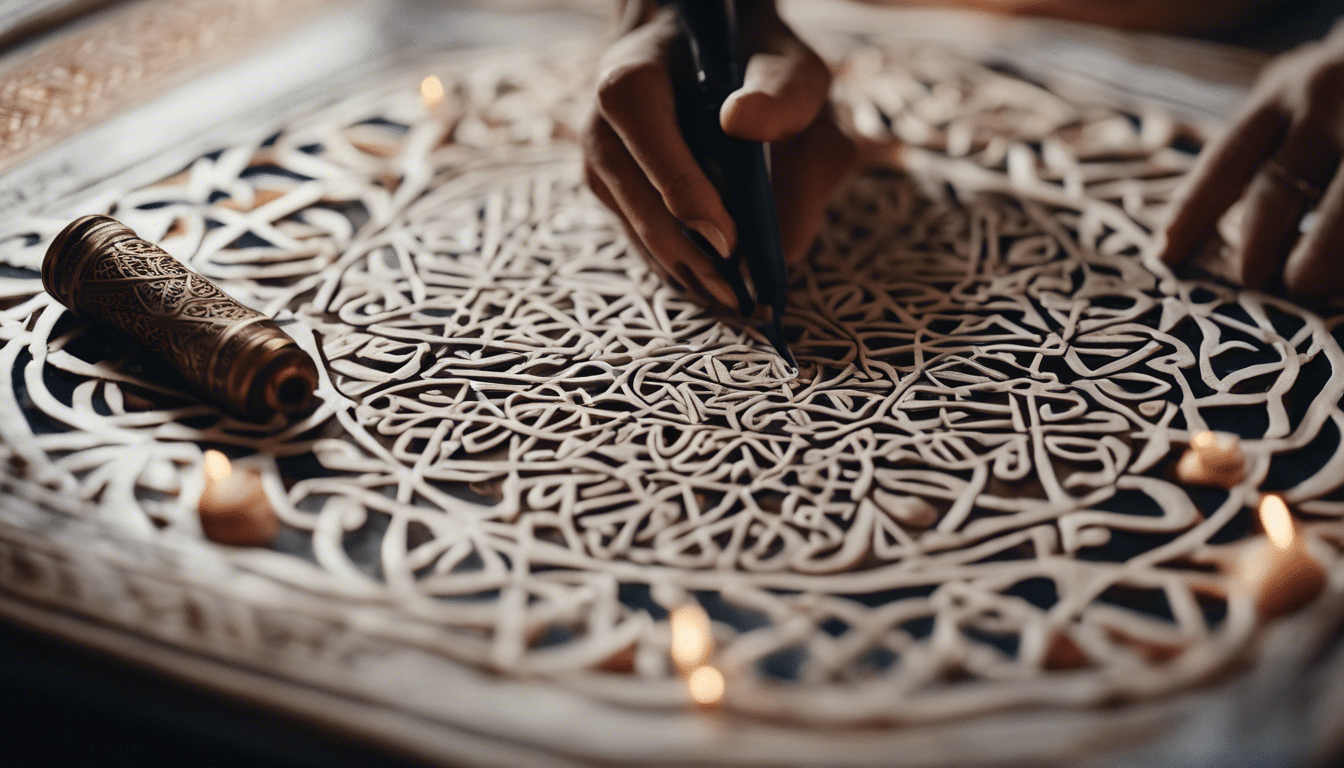
Moroccan Calligraphy: An Art Form Steeped in Heritage and Devotion
Within the colorful tapestry of Moroccan culture, the majestic sweeps and elegant lines of calligraphy hold a place of both beauty and reverence. As an art that has been perfected over centuries, Moroccan calligraphy is more than just written words—it’s an expression of identity, linking the present to a rich historical past and reflecting the spiritual ethos of an entire nation.
Traverse the streets of Marrakech or Fez, and you’ll witness the quiet omnipresence of calligraphy: etched into the doorways of antiquated palaces, gracing the walls of mosques, and even interwoven in the intricate patterns of everyday objects. This profound form of artistry is not merely decorative; each stroke offers a glimpse into the soul of Morocco, its people, and their unshakeable spiritual beliefs.
Script as Spirituality: The Religious Roots of Moroccan Calligraphy
The nexus between Moroccan calligraphy and spirituality is indelible, rooted deeply in the Islamic tradition where the written word holds divine power. The act of inscribing verses from the Quran onto surfaces is seen as an act of piety, a prayer made visible. For calligraphers, their craft is both a form of worship and a meticulous exercise of discipline; every curve and line is laden with meaning, requiring both skill and spiritual mindfulness.
Artisans across Morocco continue to cherish this union of art and faith, incorporating Arabic script into their work, ensuring that each piece—be it a ceramic, a fabric, or a piece of jewelry, carries with it a breath of devotional life.
Legacy Through Letters: Calligraphy in Moroccan Culture
Moroccan calligraphy transcends its religious implications to signify the historical and cultural identity of the nation. Masters of this craft, known as ‘calligraphers,’ are respected guardians of history, their expertise passed down through generations. The different styles of calligraphy, from Kufic to Diwani, each tell a story of artistic evolution and cultural exchange with other nations.
Glimpses of this storied past can be found in public spaces and private homes, museums, and galleries. The art form is a bridge that connects the country’s Berber origins to the Arab influence that shapes much of its current identity. Calligraphy is as much an educational resource as it is an aesthetic endeavor, enabling Moroccans to stay in touch with the roots of their language and heritage.
Strokes of Passion: Calligraphic Artistry in Modern Morocco
In modern Morocco, calligraphy has burst through the boundaries of tradition to inspire contemporary artists and designers. In bustling souks and studios, a new generation of creatives repurposes this ancient art for the modern world, blending the classic with the contemporary. The soulful elegance of calligraphic forms finds itself in modern graphic design, street art, and fashion, showcasing the versatility and enduring appeal of this age-old art.
The presence of calligraphy in everyday life continues to be a source of national pride, bridging the gap between the old and the new, the sacred and the stylish. It stands as a testament to Morocco’s dedication to preserving its artistic heritage while encouraging new interpretations and expressions.
In the hands of its practitioners, Moroccan calligraphy remains a vibrant, living art, ever-adaptive yet always connected to the spiritual and cultural heartbeat of this mesmerizing North African kingdom. As it flows from past to present, it promises to carry its profound significance into the future, a legacy written in ink, time, and faith.

